As a former biologist turned natural history film-maker, I’ve been lucky enough to visit the polar regions – both the Arctic and Antarctic – on quite a number of occasions. From an initial science cruise with the British Antarctic survey to months in the Canadian Arctic filming marine animals and local people for the first Frozen Planet, and a remarkable expedition to Zavodovski Island, the largest penguin colony in the world, these visits have been extraordinary experiences. Far from being remote and hostile, these are places that get under your skin, that leave you breathless with the beauty of our planet, warmed by the welcome of local communities, and touched by the naive curiosity of some of its most characterful animals.
In finding stories for television from such remote lands, we often rely on the images captured by photographers and scientists working in these extremes. Their first-hand knowledge informs us of new science and what we may find if we take a film trip there.
For Frozen Planet II we’ve filmed across the whole of Earth’s frozen lands – not just the polar regions, but the high mountains, cold steppe regions and even cold deserts that pepper all seven continents of the world. The book that accompanies the series draws on some of the remarkable imagery – not just that captured while filming the series, but from some of the incredible photographers we spoke to and worked with along the way. When I return from my travels I love to delve into my own shelves of books from these icy lands. These are some of my favourites:
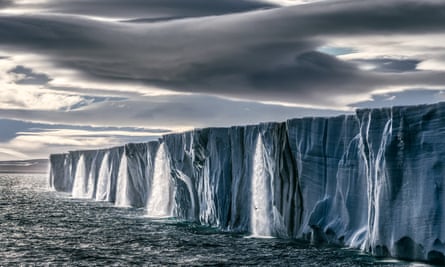
1. Born to Ice by Paul Nicklen
One of the best-known photographers of the polar world, Nicklen grew up in the Canadian Arctic before becoming a National Geographic photographer and his images from decades of visits to both poles – along with his personal story – provide a fabulous body of imagery for some armchair polar exploring. Beyond its photographic merit, and the clear love it shows for the landscape and wildlife, you can feel Nicklen’s passion to protect these fragile lands.
2. Under Antarctic Ice by Norbert Wu
Beneath Antarctica’s Ross Sea is a truly otherworldly landscape where giant amphipods, vibrantly colourful sea stars and sea spiders the size of dining plates wander the seabed of an ice-covered world. Wu was one of the first photographers who gained access to this incredible location by working with the US National Science Foundation. His images were the first I had ever seen of this rich yet alien landscape – its colour and strangeness in total contrast to the seemingly desolate white wilderness of the continent beyond.
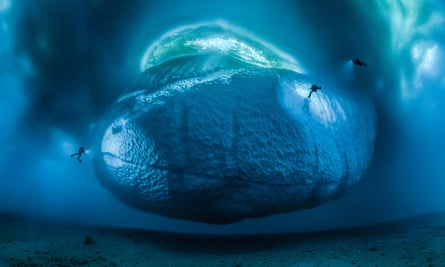
3. Adélie, Terre & Mer by Laurent Ballesta and Vincent Munier
This incredible two-volume, large-format photo collection showcases the work of French nature photographers Ballesta and Munier, who explored on and under the pack ice of the Adélie coast in Antarctica. The result is a beautiful showcase that captures the almost monochrome landscape. Munier’s volume explores the pack ice and bird colonies, often placing his subjects like silhouettes in the vastness of their snowbound landscapes, while Ballesta explores the underwater ice edge and its emperor penguins, Weddell seals and towering icebergs. It’s an exquisite double-act.
4. Penguin: A Story of Survival by Stefan Christmann
More than just a collection of beautiful photographs, Christmann tells one of the most remarkable stories of the animal kingdom – that of the emperor penguin who raises his chicks through the most hostile winter on Earth. Christmann built the body of work for this volume while overwintering at the German research base at Atka Bay. The neighbouring emperor colony, 10,000 strong, was the focus for one of the BBC Natural History Unit Dynasties films, which Christmann helped film. The images of the chicks and the huddle are particularly beautiful, along with his stories of life and survival at the end of the world.
5. Arctic Pearl by Sergey Gorshkov
Wrangel Island is a unique place. Lying 400 miles off the north coast of Russia, this Arctic Island of black beaches and vertiginous cliffs is one of the most unusual, primordial islands on Earth and, in late summer, home to one of the largest populations of polar bears on the planet. Gorshkov is probably the best-known Russian nature photographer, for his award-winning images of Siberian tigers. Over many years, he’s undertaken an ambitious photographic journey across the whole of Russia’s polar region, which he documents through a series of books – this volume being my favourite. It’s an island that is hard to visit, but Gorshkov’s images take us there.
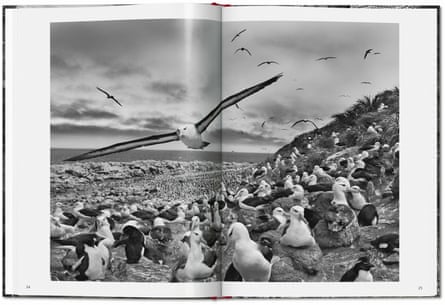
6. Genesis by Sebastião Salgado
While the breadth of this book is more than just polar, Salgado includes imagery from some of the least known and remarkable corners of Antarctica in this study of landscapes untouched by humankind. Few people have heard of the South Sandwich Islands , yet here is “penguin heaven” – one of the largest colonies of chinstrap penguins in the world, who reside on an active volcano, battered on all sides by the terrible force of the Southern Ocean. Salgado’s black and white images are captivating.
7. Antarctic Oasis by Tim and Pauline Carr
Anyone who’s visited South Georgia has probably heard the story of the Carrs who, after 25 years of cruising the world’s oceans, decided to live for five years as the only permanent residents on this wildlife-festooned sub-Antarctic island. This book is a collection of photographs from every season and as they sailed, mountaineered, skied and explored, getting to know its extraordinary colonies of penguins, albatrosses and seals. It’s an insight into their incredible adventure – one most of us could only ever dream of.
8. Arctica: The Vanishing North by Sebastian Copeland
It would be impossible to construct a list like this without including some of the books that dwell on the fragility of our icy landscapes. Copeland has specialised in this across his various books. In this large volume, Copeland immerses us in spectacular scenery from across the Arctic in rich detail, using images that often fold out to spread across three sheets – allowing you to focus on his almost painterly attention to detail. A poignant postcard from the edge.
9. The Last Ocean by John Weller
This beautiful collection of images focuses on Antarctic’s Ross Sea, said to be the last intact marine ecosystem left on the planet. A stunning glimpse of the incredible oceanic landscape – from choppy seas to slabs of floating sea ice – and its charismatic inhabitants, including Adélie penguins, killer whales and Weddell seals.
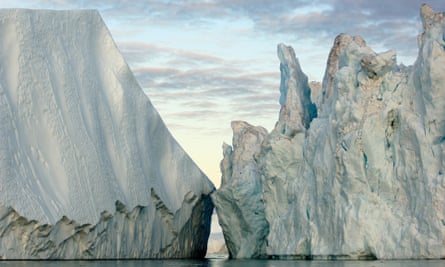
10. Ice: Portraits of Vanishing Glaciers by James Balog
This book, published in 2012, was the first big photographic project to document the impact of climate change on glaciers. Commissioned by the Extreme Ice Survey, these images are drawn from a body of work taken by a network of glacier-watching cameras positioned from Greenland to the Himalayas. The images invite you to dwell on the ephemeral beauty of these icy landscapes. The cover of the book poignantly says “see it now, because what’s shown in this book will never be seen again in the history of civilisation”. Sadly correct, several of these glaciers are places we revisited in filming Frozen Planet II to find ice conditions quite changed in just a decade.
Frozen Planet II by Mark Brownlow and Elizabeth White is published by BBC Books. To help the Guardian and Observer, order your copy from guardianbookshop.com. Delivery charges may apply.
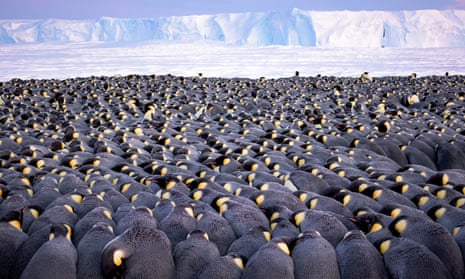
Comments (…)
Sign in or create your Guardian account to join the discussion